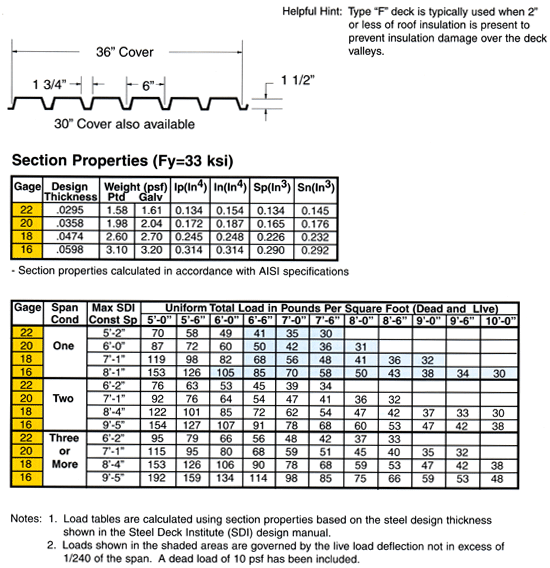Composite Deck Design Handbook By Sdi Www

International Journal of Engineering Research and Applications (IJERA) is an open access online peer reviewed international journal that publishes research. It includes information for the design of steel deck diaphragms for roof and floor decks and complies with the requirements of the ANSI/AISI S310-2013 North American Standard for the Design. Our First Edition, FDDM, of the SDI Floor Deck Design Manual replaces the 1997 SDI Composite Deck Design Handbook, CDD2.
Hi, I'm designing a concrete sleeper which will support a 78' dia pipe and several smaller pipes (2' to 6' dia). The sleeper looks like a wall footing with length equal to 21' and height of 8'-8'. Its (wall-like) pedestal is 18' thick. The 78' dia pipe has high anchor loads (lateral loads normal to pedestal) but the pipe shoe which transfer the lateral loads from pipe to pedestal is only 8'. For shear and flexure design of pedestal, what effective width should I use? I'm doubtful to consider the whole pedestal length to provide shear and flexural resistance.
Am I correct? Your responses will be highly appreciated. RE: Design of Concrete Sleepers (Structural) 11 Nov 14 08:22. I think that you're correct. I would: 1) Use ACI Appendix D for the anchorage design. 2) For flexure, assume a 30-45 degree load spread to the base.
3) Shear is the tricky bit. First, I'd figure out how close to the top I could get with one way shear working over the load spread area mentioned above. Then I'd check lateral, slab edge style punching shear on the section of wall above. A sketch would help. I'm not entirely sure that I understand the situation.
The greatest trick that bond stress ever pulled was convincing the world it didn't exist. RE: Design of Concrete Sleepers (Structural). Just as I imagined it. I don't have a specific reference I'm afraid. For simple spans, there is related guidance in: 1) PCI handbook 2) UK concrete code 3) SDI composite deck manual.
For strength purposes, you can always design in a distribution beam at the top of your wall and then distribute your loads laterally as far as the capacity of that beam will allow. How To Install Second Hard Drive Dell Xps 8300 Specs. Download Font ไทย Psp there. In your case, you can probably have the width of the whole wall for the sake of a few 20M at the top. The greatest trick that bond stress ever pulled was convincing the world it didn't exist. RE: Design of Concrete Sleepers (Structural) 13 Nov 14 01:09. Looking at this from the pipe perspective, just make sure you've got the loads correct from the pipe. This looks like it should be a simple sliding support not an 'anchor', but maybe that was misinterpretation from me and you mean anchor of the plate into the support? There will be some significant loads from weight and friction for such a large pipe and T supports are notorious for either falling over or breaking when construction doesn't match the nice drawing.
If this was an anchor then both support and concrete support would need to be much much bigger. You could always make the support plate fixing into the concrete better and bigger? My motto: Learn something new every day Also: There's usually a good reason why everyone does it that way.